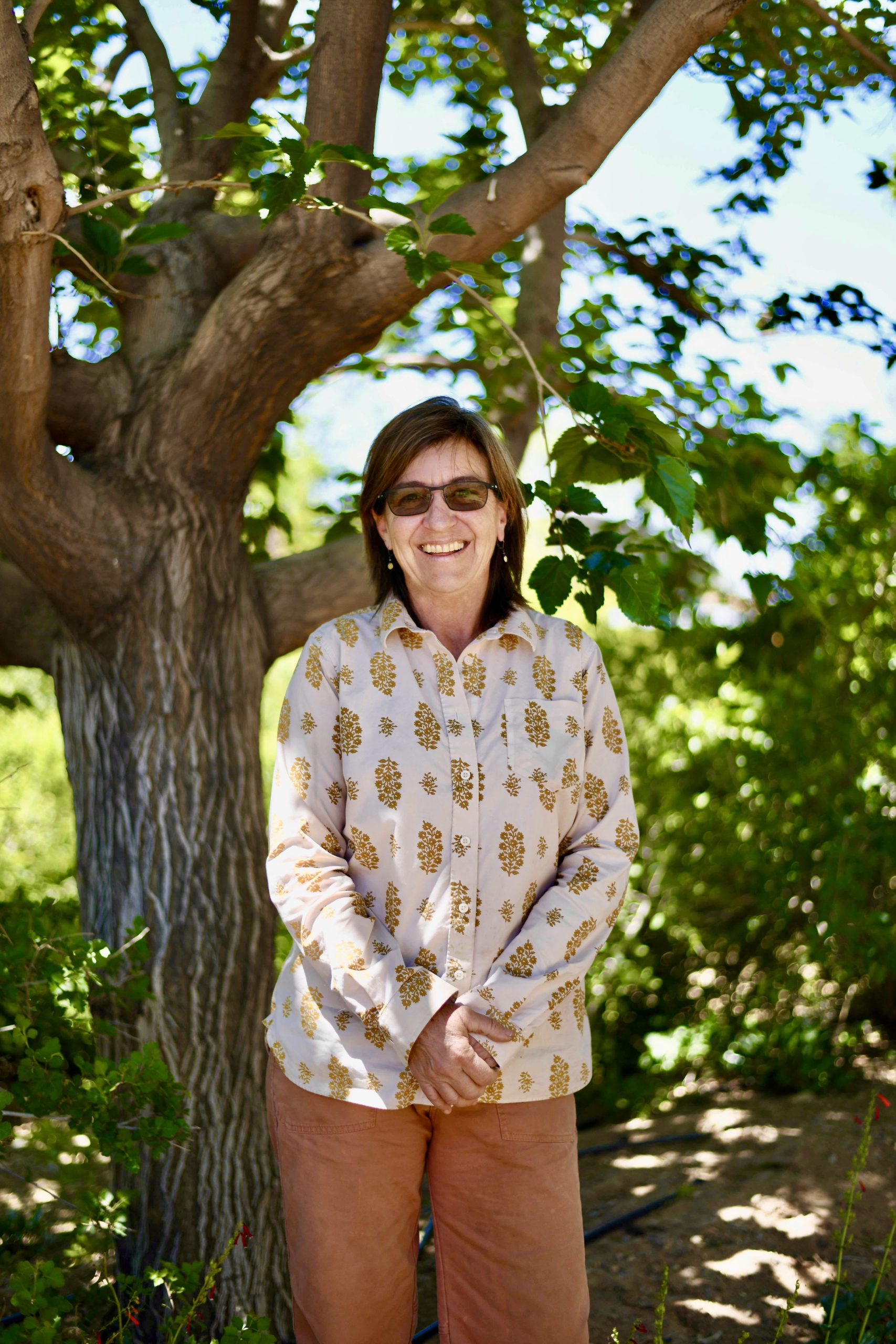Some information may be outdated.
Rhonda Gotway-Clyde grew up in her grandmother’s garden in rural Illinois, on a peninsula of land where the Illinois and Mississippi rivers meet. She remembers most of the farmland in Illinois being devoted to beans and corn, but where she grew up, there were lush, rolling hills and fragrant peach trees. Her grandmother, and her grandmother’s land, taught Gotway-Clyde to love gardening, she said.
Gotway-Clyde is the owner of Easy Bee Farm, a community-supported agriculture farm in Spanish Valley, whose mission is to produce “fruits, vegetables, and joy while providing a healthy habitat for pollinators and the humans who work it.”
The farm is home to over 2,300 feet of garden rows, 30 chickens, enough produce for 50 CSA shares and 10 flower shares, two full-time employees, and the CEO of Moab Regional Hospital’s grandmother’s jade tree, which was too large and too precious for Jen Sadoff’s house.
Gotway-Clyde’s gardening was learned through years of trial and error, she said, and she’s still learning. She loves the desert immensely, despite growing up in fertile Illinois: she first came to Moab in 1989 for a job with the Student Conservation Association in the Needles District of Canyonlands National Park. She remembers driving into town in a snowstorm and waking up the next morning to a view of snow dusting the valley walls.
“That day I drove down to the Needles, through Indian Creek, and I was like, ‘this is it,’” she said. She moved to her property in Spanish Valley three years later and has established the farm ever since. She planted her first tree, a native box elder, in 2007, shortly followed by a handful of Arizona cypresses to create shade and shelter.
“I’m in charge of trillions of lives,” Gotway-Clyde said, “once you start counting the microorganisms.”
In the coming years, Gotway-Clyde is planning an expansion: she wants to open a new farm stand and prep kitchen, so she can better offer local food to the community.
“It takes an army to feed a village,” she jokes. “The ability to know the people who are growing your food … there are people here who say they just can’t live any other way. It strengthens the community’s cohesiveness. Fresh produce brings a lot of things together.”
With that expansion, she’ll also be able to create more housing on the property for her employees, and get her garage back—the garage previously housed all CSA operations, but once the farm stand is open, she’ll move everything there.
But farming in the desert comes with a number of challenges. In the past few years, Gotway-Clyde has run into challenges concerning water, insects, heat, and wind— a recent study published in the journal Nature found that the entire American West is experiencing its worst drought in over 1200 years, and the insect issues due to the changing climate “are maybe not worse, but weird,” Gotway-Clyde said. A few years ago, she said, a leafhopper pest transmitted a virus to her tomatoes, wiping out 60% of the heirlooms.
“It’s those sorts of things that I think are going to get more intense,” she said. “And farming in the desert in a drought situation is the biggest challenge.”
Gotway-Clyde is constantly improving operations to withstand the desert climate, she said: she utilizes mulch, drip systems, and shelterbelts made of native plants to be as efficient as possible with the water.
For this season, she’s focused on regenerating her soil in preparation for the expansion, she said, and to increase production. Healthy soil “keeps the plants happy,” she said. She’s ridiculously excited about the farm stand: she already knows where everything will go in the concrete building that will house the stand, and as she explains it she can’t keep a smile off her face. She dreams of turning the farm stand into a co-op, too, to get even more of the community involved with local agriculture and local foods.
“If we had the time and the energy and manpower,” Gotway-Clyde said, “I know we can do even more.”
Appreciate the coverage? Help keep local news alive.
Chip in to support the Moab Sun News.





